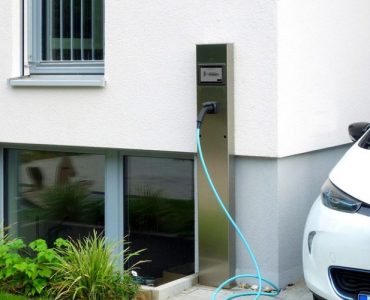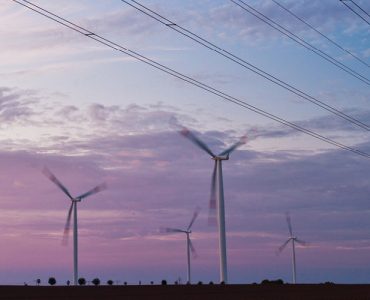The transformation of our energy system from a fossil fuel-based to renewable-based system is key to limiting global warming to 1.5°C above pre-industrial levels. However, the massive and rapid expansion of renewable energy technologies for the electricity, heat and transport sectors is inevitably linked to challenges. One challenge we face, for instance, is the required materials for the manufacture and infrastructure.
Material efficiency – or increasing the product’s benefits while minimizing material consumption and waste (“doing more with less”) – can help us to address the following issues.
1. Deploying renewables on a massive scale requires large amounts of materials
The construction of solar photovoltaic (PV) plants, wind turbines and electric vehicles generally require more materials to build than conventional technologies. Scaling them up on a global level will rapidly and hugely drive up the demand for materials. For example, global PV capacities need to be expanded by a factor of at least to achieve our climate goals by 2050. These ambitious expansion targets require a correspondingly adequate supply of materials amounting to hundreds to thousands of kilotons of aluminum, polysilicon, copper, glass, silver and lead, for example. The constant growth in material production is already a reality: The extraction of materials has tripled over the last 50 years, as global population has increased. While resources support economic progress and human well-being, current levels of consumption are recognized as unsustainable and need to change in the context of a true “green” energy transition. Using materials more efficiently can reduce the amount of required resources.
2. Some materials needed in renewables are subject to high supply risks
While the need for rare earth elements in low-carbon technologies has often been discussed, it should be underlined that the most urgent concern with respect to materials is the geopolitical, technical or economic supply risks and not to the much-debated geological scarcity.
Where are the materials coming from? How many countries can provide the material? How stable are these countries and what are the environmental and social regulations in the country? These are some of the questions asked when evaluating the supply risks. Indeed, renewables require very specific metals, and the procurement can be highly constrained due to various factors, as for instance, with indium in high-efficiency solar cells, cobalt in Li-ion batteries and neodymium in permanent magnet-based wind turbines. Increasing the material efficiency helps to reduce the dependency on supplier countries and also to limit the impact of price variations on the product price.
3. Material supply chains are linked to major environmental impacts and intransparent social conditions
The International Resource Panel estimated that the extraction and processing of metals and non-metallic minerals (sand, gravel, clay) account for 20% of global climate change impacts, 20% of global particulate health impacts and 4% of global water stress.
Furthermore, the renewable energy sector, as any other industrial sector, has little information on their own supply chains. For example, stakeholders at the first steps of production, their locations, working conditions or impacts on local communities are often a complete black box for the manufacturer at the end of the supply chain. Increasing material efficiency is therefore a key strategy to avoid significant environmental impacts and minimize social risks.
So, how can you increase material efficiency?
Improving the way we consume materials implies that we must better understand how we use them. Material and waste flows need to be assessed. The environmental, social and economic benefits of material efficiency measures are to be evaluated as well in order to act strategically. Material flow analysis (MFA), environmental life cycle analysis (LCA), criticality analysis and social LCA are a few examples of the R&D tools at our disposal which help us to guide the development of clean energy systems.
On the practical side, efficiency measures can take various forms. Production processes can be optimized to limit waste, the product design can be adapted to enable repair and extend the product lifetime, recycled materials can be used for manufacturing. For energy technologies, material efficiency measures are a constant work in progress. For example, research on increasing the efficiency of PV modules, improving recycling and limiting the demand for materials such as silver and silicon through design adaptation has been actively pursued over the last years.
Further reading
International Resource Panel (2019). Global Resources Outlook 2019: Natural Resources for the Future We Want.
International Energy Agency (2021). The Role of Critical Minerals in Clean Energy Transitions.
Gervais, E.; Herceg, S.; Nold, S.; Weiß,K.-A. Sustainability strategies for PV: framework, status and needs (2021). https://doi.org/10.1051/epjpv/2021005
Cover image: Examples of materials with supply risks in energy technologies. © shutterstock.com/artjazz, iStock.com/gerenme; Collage: Fraunhofer ISE





Add comment